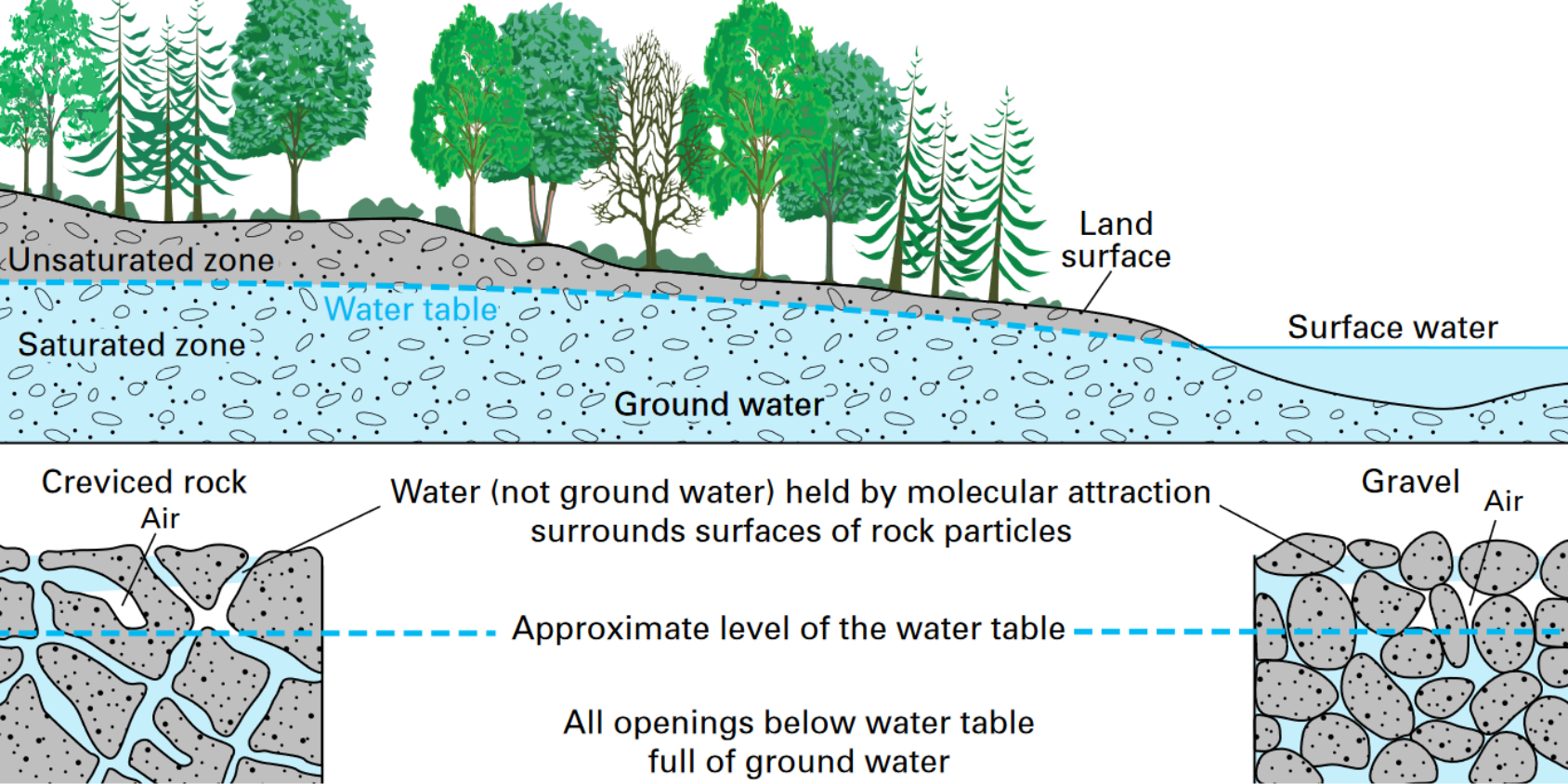When you think of water you probably think about the water coming from you faucet or perhaps the calming waves of the ocean. But did you know there is water flowing right underneath your feet that you can’t even see? This unseen force plays an important part in the health of the public and can be a disaster if it becomes contaminated. We will take a deeper look into what groundwater is, how to remediate groundwater, and the different types of groundwater remediation.

Image from USGS
What is Groundwater?
Groundwater is water held underground that resides in cracks, spaces, and crevices in soil or rock. Groundwater can resurface by being withdrawn from the ground by a well, intersect with nearby bodies of water, or seep out of a rock formation or hillside. If groundwater becomes contaminated, it needs to be immediately remediated to prevent further harm.
What is Groundwater Remediation?
Groundwater remediation is the process of treating polluted groundwater by removing the pollutants. Most groundwater is clean, but groundwater can become contaminated as a result of over-application of fertilizer or pesticides, spills from industrial operations, runoff, or leaking from landfills. Contaminated groundwater causes hazards to public health, which is why groundwater remediation is needed to address these issues.
Types of Groundwater Remediation
There are two types of groundwater remediation: in-situ and ex-situ. In-situ means in place or on-site, while ex-situ means off-site. In-situ involves cleaning the groundwater where it is currently situated, whereas ex-situ involves having the groundwater excavated and then taken off-site. In-situ is a more cost-effective solution, as it doesn’t require the use of excavation. But, while ex-situ might be more expensive and extend the length of the process, it allows for no further damage to be done at the current site.
Groundwater Remediation Methods
There are many different methods and techniques when it comes to groundwater remediation. The three most common groundwater remediation methods are categorized into biological, chemical, and physical.
- Biological: This method uses microorganisms, organic matter, and plants to clean contaminated groundwater. Biosparging, bioventing, and bioaugmentation are three ways to use biological material to break down chemicals and compounds in groundwater. The benefit of using a biological method is convenience, as the contaminated water may not need to be removed to be treated.
- Chemical: Chemical remediation can be achieved through chemical precipitation, oxidation, ion exchange, and carbon absorption. While this method may take longer or may be more costly to execute, it may be the only option when it comes to certain contaminants.
- Physical: This method uses pump and treat, which physically removes the groundwater from the aquifer and then treats the groundwater at the surface. After the groundwater is brought to the surface, technologies such as carbon absorption or air stripping are used for contaminant removal. The main benefit of this method is that it controls plume migration and reduces plume concentration.
Factors such as type of contaminant, its location and concentration, and its chemical and physical composition go into the process of deciding which technique is right for a project site. At Handex we start by surveying and collecting samples from a site, which allows us to come up with the best groundwater remediation strategy for your project.
About Handex
As groundwater remediation experts, we will service your needs in a cost-effective manner utilizing the knowledge obtained through our extensive track record of working on a wide variety of sites with site-specific conditions, systems, and regulations. We have the necessary experience to evaluate and assess an existing system on-site and provide recommendations and implementation for system optimization.
For more information about groundwater remediation services, request a free quote today, or contact us here.


